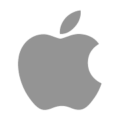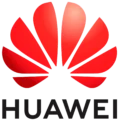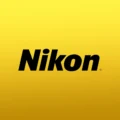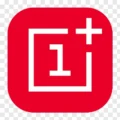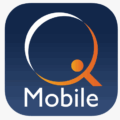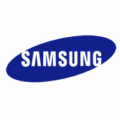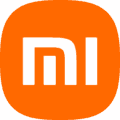- iLove Mobile
- Mobiles
- iPhone 17 Pro Max Price in India
iPhone 17 Pro Max Price in India
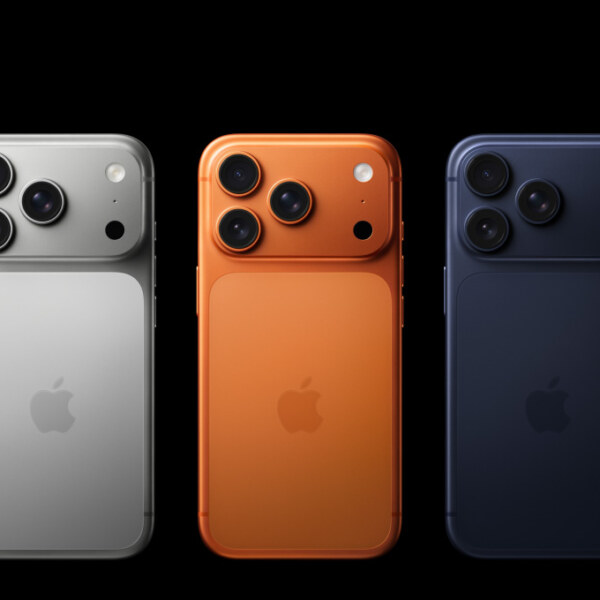
-
CPU: A19 chip 6‑core CPU 5‑core GPU
-
RAM: 12GB
-
Storage: 256GB, 512GB, 1TB, 2TB
-
Display: LTPO Super Retina XDR OLED
-
Camera: Back 48MP, Front 18MP
-
OS: iOS 26
iPhone 17 Pro Max Display
-
6.9‑inch Super Retina XDR OLED, 2868×1320 at 460 ppi, Pro Motion up to 120 Hz, Always‑On, HDR, True Tone, P3 wide color, peak brightness up to 3000 nits (outdoor), 1600 nits (HDR), 1000 nits typical; anti‑reflective and oleophobic coatings.
-
Dynamic Island; rounded-corner design (6.86 inches when measured as a standard rectangle; actual viewable area is less).
Dimensions and weight
-
Height 6.43 in (163.4 mm); Width 3.07 in (78.0 mm); Depth 0.34 in (8.75 mm); Weight 8.22 oz (233 g).
-
Pro Max display size class 6.9 inches; Pro model is 6.3 inches for reference.
Design and materials
-
Unibody aluminum frame with Ceramic Shield
-
Colors: Silver, Cosmic Orange, Deep Blue.
Chipset and performance
-
Apple A19 Pro SoC; 12 GB RAM on Pro models (platform detail).
-
New Apple N1 networking chip; Qualcomm Snapdragon X80 5G modem this generation.
Storage options
-
256 GB, 512 GB, 1 TB, 2 TB (select regions/variants).
Rear cameras
-
Main: 48 MP wide; Telephoto: new 4× tetra prism 48 MP enabling sensor‑crop up to optical‑quality 8×; Ultra‑wide: 48 MP class (capabilities vary by mode).
Front camera
-
18 MP “Centre Stage” selfie camera with square sensor geometry to support in‑frame rotation features; supports 4K video modes and Dual Capture pairing.
Video recording
-
4K at multiple frame rates; HDR video recording; ProRes options on Pro models; Dual Capture front+rear; advanced stabilization modes (exact modes vary by storage and app).
Battery and charging
-
Typical capacity listed around 5088 mAh on device databases; significant uplift vs. prior generation; MagSafe wireless charging supported (up to 25 W on some carrier spec sheets); Qi‑compatible wireless charging; wired fast‑charge via USB‑C.
Connectivity
-
5G with Snapdragon X80 modem; Wi‑Fi (latest gen per Apple platform), Bluetooth, Ultra Wideband, NFC for Apple Pay; GPS/GNSS; dual eSIM support depending on region.
-
USB‑C port for charging/data; supports USB‑C accessories.
Sensors and biometrics
-
Face ID via TrueDepth camera; LiDAR Scanner; barometer; high dynamic range gyro and accelerometer; proximity; ambient light.
17 Pro Max Build and durability
-
Ceramic Shield front; aluminum unibody frame with Ceramic Shield. IP‑rated dust/water resistance
Audio
-
Stereo speakers; spatial audio playback support; high‑quality microphones
Software 17 Pro Max
-
A19 Pro Ships with iOS 19 Mobile
Full Specifications
General
| Device Types | Mobile |
| Model | 17 Pro, 17 Pro Max, |
| Price | 134900, 149900 |
| Released | 09 October, 2025 |
| Status | Available |
Design
| Type Design Type called form factor refers to a mobile phone's size, shape, and style as well as the layout and position of major components of phone. There are three major form factors seen in mobile phones => bar phones, folding phones and sliding phones. | Bar |
| Screen Size | 6.3 inch, 6.9 inch |
| Colors | Silver, Cosmic Orange, Deep Blue |
| Height | 163.4 mm |
| Width | 78.0 mm |
| Thickness | 8.75 mm |
| Weight | 204g, 231g |
Network
| 4G Network | Yes |
| 5G Network |
FDD-5G NR (Bands n1, n2, n3, n5, n7, n8, n12, n20, n25, n26, n28, n30, n66, n70, n75) TDD-5G NR (Bands n38, n40, n41, n48, n53, n77, n78, n79) FDD-LTE (Bands 1, 2, 3, 4, 5, 7, 8, 12, 13, 17, 18, 19, 20, 25, 26, 28, 30, 32, 66) TDD-LTE (Bands 34, 38, 39, 40, 41, 42, 48, 53) UMTS/HSPA+/DC-HSDPA (850, 900, 1700/2100, 1900, 2100 MHz) GSM/EDGE (850, 900, 1800, 1900 MHz) 5G (sub-6GHz) with 4x4 MIMO11 Gigabit LTE with 4x4 MIMO11 |
| SIM SIM (Subscriber Identity Module) is a small card that contains mobile network subscriber's account information. This allows the phone using the card to attach to a mobile network. The SIM card is most commonly associated with GSM and UMTS mobile networks. Moving a SIM card from one phone to another allows a subscriber to switch mobile phones without having to contact their mobile network carrier. SIM cards can also be used by a phone to store limited amounts of data, such as phone numbers and text messages. | Nano SIM |
| Dual SIM | Nano-SIM and eSIM |
Display
| Screen Type | LTPO AMOLED |
| Screen Size | 2868x1320 |
| Resolution | 460 ppi |
| Refresh Rate | 120Hz |
| HBM Brightness | 3000 nits |
| Peak Brightness | 1000 nits |
| Pixel Density Pixel Density (PPI) is refers to the concentration of pixels on a particular display, measured in pixels per inch (ppi). Pixel density is calculated by dividing the diagonal pixel resolution of a display by its diagonal size, higher pixel density better display quality. | 460 ppi |
| HDR Mode |
Multimedia
Camera
| Primary Camera is able to capture photographs and usually videos, The most important characteristics of a camera are the resolution (measured in megapixels), lens focus type (fixed or automatic), higher megapixel cameras are known to capture higher quality photos, but not always a good measurement of the photos quality. | 48 MP Wide Angle, 48 MP Ultra-Wide, 48 MP Telephoto (40x) Zoom |
| Secondary Camera | 48 MP |
| Tertiary Camera | 48 MP |
| Front Camera | 18 MP |
| Image Resolution | 1320 x 2868 pixels |
| Flash Flash Light => There is commonly two types of flash lights are used in camera mobile phones, LED Flash (LED flash offers lower power consumption with drive circuitry that takes up very little room, LEDs can be strobed faster than any other light source), Xenon Flash (xenon flash produces an extremely intense full-spectrum white light for a very short duration) | Dual-LED |
| Video Quality | 4K, 1080p, 720p, Dolby at 24 fps, 25 fps, 30 fps, 60 fps, 100 fps |
Software
| Operating System OS => Every computer system run on a base software called Operating System (OS). Operating System controls all basic operations of the computer (such as smartphone, PDAs, tablet computers and other handheld devices). The Operating System allows the user to install and run third party applications (apps), apps are used to add new functionality to the device. | iOS 26 |
Hardware
| Chipset Chipset is a group of integrated circuits designed to perform one or a more dedicated functions, often with real time computing constraints, Popular smartphones are equipped with more advanced embedded chipsets that can do many different tasks depending on their programming. | A19 Pro chip |
| CPU CPU (Central Processing Unit) mostly known as processors, CPU processes instructions in order to carry out certain functions that make your device operate properly. Processors are often described as the brain of computers, smartphones and tablets, Smartphones and tablets rely on processors to carry out their every task, Processors are an incredibly important factor in selecting any type of computing device, including your smartphone. | 6‑core CPU with 2 performance and 4 efficiency cores |
| GPU GPU (Graphics Processing Unit) is a single-chip processor designed to rapidly manipulate and alter memory to accelerate the creation of images in a frame buffer intended for output to a display, This includes things such as lighting effects, object transformations, and 3D motion. | 6‑core GPU with Neural Accelerators |
Connectivity
| Bluetooth Bluetooth is a wireless communications technology for exchanging data between mobile phones, headsets, computers and other network devices over short distances without wires, Bluetooth technology was primarily designed to support simple wireless networking of personal consumer devices. | v5.0 |
| Wi-fi Wi-Fi is a popular wireless networking technology using radio waves to provide high-speed network connections that allows devices to communicate without cords or cables, Wi-Fi is increasingly becoming the preferred mode of internet connectivity all over the world. | Wi‑Fi 4 = IEEE 802.11n: 2.4/5 GHz |
| USB | Type - C USB 3.2 |
| GPS GPS The Global Positioning System is a satellite-based radio navigation system, GPS permits users to determine their position, velocity and the time 24 hours a day, in all weather, anywhere in the world, In order to locate your position, your device or GPS receiver must have a clear view of the sky. | |
| NFC NFC (Near field communication) is a set of standards for smartphones and similar devices to establish peer-to-peer radio communications with each other by touching them together or bringing them into proximity, usually no more than a few inches. | |
| Earphone Jack | Type - C |
Battery
| Battery Type Battery Type => Cell phones run on various kinds of batteries depending on the manufacturer, phone size or shape and features. There are basically four types of cell phone batteries => Lithium Polymer, Lithium Ion, Nickel Metal Hydride and Nickel Cadmium. | Li-Ion (Lithium Ion) |
| Capacity Battery Capacity is a measure (typically in Amp-hr) of the charge stored by the battery, and is determined by the mass of active material contained in the battery. The battery capacity represents the maximum amount of energy that can be extracted from the battery under certain conditions. | Li-Ion 4823 mAh |
| Fast Charging | Wired, PD3.2, AVS, 50% in 20 min |
| Wireless Charging Wireless Charging (Inductive Charging) uses an electromagnetic field to transfer energy between two objects. This is usually done with a charging station. Energy is sent through an inductive coupling to an electrical device, which can then use that energy to charge batteries or run the device. | 25W wireless |
| Reverse Charging | 4.5W reverse wired |
Mobile Storage
| RAM (Memory) RAM (Random Access Memory) is a type of computer memory that can be accessed randomly, any byte of memory can be accessed without touching the preceding bytes that allows information to be stored and accessed quickly from random locations. RAM is the most common type of memory found in computer systems, smartphones, tablets and other electronic devices. | 16 GB |
| ROM | 256GB |
| OTG | |
| Memory Slot |
Sensor
| Sensors Sensors are electronic components that detects and responds to some type of input from the physical environment. The specific input could be light, heat, motion, moisture, pressure and location, The output is generally a signal that is converted to use in computing systems, a location sensor, such as a GPS receiver is able to detect current location of your electronic device. |
Face ID, accelerometer, gyro, proximity, compass, barometer Ultra Wideband (UWB) support (gen2 chip) Emergency SOS, Messages and Find My via satellite |
| Fingerprint Type | On Screen |
Offers
-
 Get 5% back with Amazon Pay ICICI Bank credit card for Prime members. 3% back for others. Not applicable on EMI orders and Amazon business transactions.
Get 5% back with Amazon Pay ICICI Bank credit card for Prime members. 3% back for others. Not applicable on EMI orders and Amazon business transactions.
View Offer
Reviews
Disclaimer Note
Hello Mobile Lover we guarantee that the information on this page including the price, specs and images is 99% correct. We may get a commission for qualifying sales through our links.

